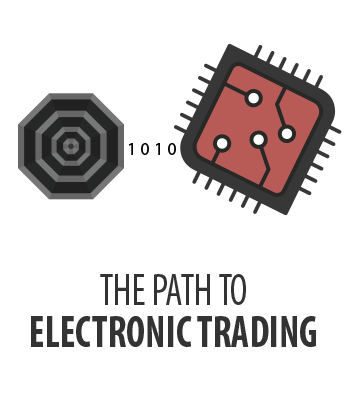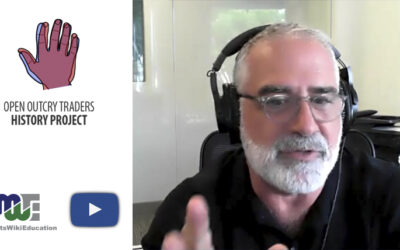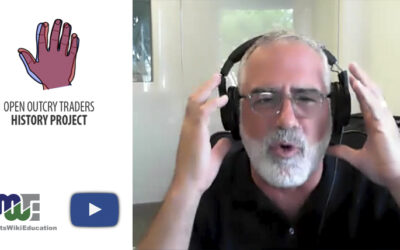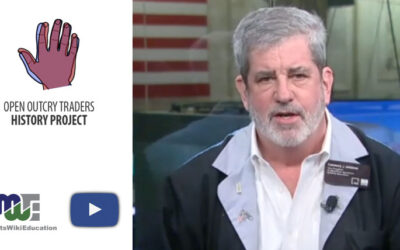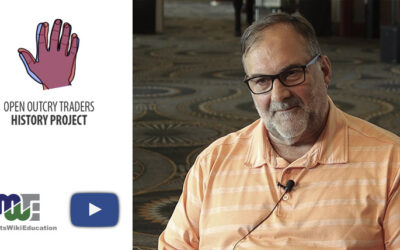Peter Harrigan capped off his career as a floor trader on the CME and the Pacific Exchange in the middle of a bear market in 2002. Since then, he’s managed money, helped start up an AI company and traded cryptocurrencies, but he continues to speak fondly of his floor days, even the challenging ones.
In a two-part interview with John Lothian for the Open Outcry Traders History Project, Harrigan recounted an experience trading options on Adobe stock, accumulating massive short gamma positions ahead of expiration that he “almost” forgot he had. As the market in Adobe shares began to rally, he scrambled to offset his options positions by selling the stock outright, only to have to buy it back again later.
When the episode was over, he said he had sold about 50,000 shares and bought about 50,000 shares. “I was kind of happy I got through it with a loss of only about $500 rather than a half-million,” he said. He then looked up and realized it was only 9 a.m. Pacific time and still had the rest of the day to get through.
At the CME, breaking into the Australian dollar pit, he said his red permit badge stood out,”like a sore thumb,” with the bright color making it obvious to everyone that he was new and paid less to trade. Moving to Swiss franc options pit, he found it initially “terrifying to start yelling out prices,” in case they were too high and other traders might take advantage of his lack of expertise.
Nevertheless, when the trading was slow, “I might do a crossword or I might read an article. But I just never left,” Harrigan said. “Especially when no one else was around. If there were a couple small, easy trades while you stood in the pit, “you might make $50 a few times a day.” That addition to the bottom line was worth it to a small trader, he said. Plus, one never knew “if something great could happen,” he added.
Harrigan said trading at the CME and the Pacific Exchange were very different experiences.
For one thing, at the CME there were no posted bids and offers. Traders had to make up their own bids and offers from their trading sheets.
At the Pacific Exchange, all of the bids and offers were electronically posted and calculated by the system. A trader could change the input to the system, but many of the young guys would just read them off, he said.
At the Pacific Exchange, early traders also had a very different culture. Many were surfers. Harrigan said if you gave the California guys a hard time, “they would look at you and say, ‘Bro, why are you being this way?’”
Chicago traders helped each other, but also “endlessly” gave each other a hard time, Harrigan said. “You can’t be around that many people all day and yell out things without learning to be comfortable in your own skin,” he said.

